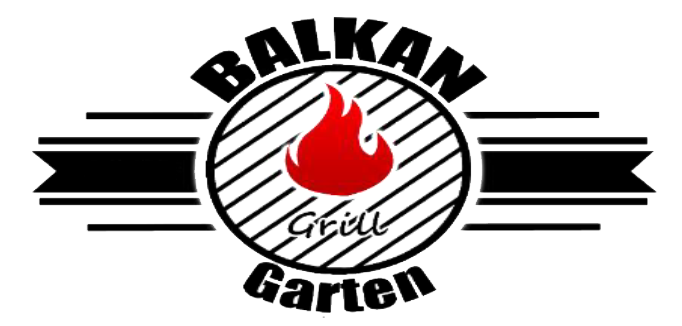Contents
As the name suggests, clients live on-site, meaning they have 24-hour supervision or care. Program length can vary and is dependent on individuals’ needs, alcohol addiction symptoms, abuse stats, withdrawal effects but it is usually between 30 to 90 days. Typically, days are scheduled with activities, therapy, and medical care, leaving minimal free time.
- The intensive outpatient treatment program allows individuals to prioritize treatment along with their family, work or school.
- Appointments for outpatient therapy programs occur less often than sessions for any of the other levels of care.
- This isn’t always true, especially now, at a time when more people are aware of the benefits of getting treatment sooner.
- Outpatient rehab allows participants to attend regular meetings while they live at home and maintain their routines.
Because of the wide range of severity in addiction problems, we offer several levels of substance abuse treatment to meet people in every stage of addiction and recovery. As people progress through recovery, they will also transition through how to avoid alcohol withdrawal these substance abuse programs to ensure that they are in a type of treatment for addiction that best fits their needs. In this stage of level 2 care, patients live on their own or in special housing, such as a sober living home.
A flexible continuum of several levels of care increases the chances of a successful treatment process and allows more patients to receive adequate care. More people will have a better chance of preventing relapse, overdose and other negative situations. Spring Hill Recovery Center provides residential treatment for addiction and co-occurring mental health issues. However, some conditions may require treatment beyond our capabilities, and we reserve the right to medically discharge a patient for a higher level of mental health care.
Exhibit 3-3. Goals, Duration, Activities, and Completion Criteria
Normally, individuals will step down to this form of treatment after completing an inpatient or intensive outpatient program. Outpatient therapy is also great for patients who are graduating from a residential or partial hospitalization program and still want to continue with treatment. It’s the perfect level of care to help patients to start fully integrating themselves within their communities and begin living their new sober lifestyle. The first step in many patients’ recovery process and our highest level of care is withdrawal management and detoxification. Our withdrawal management treatment program provides a safe and manageable detox process for patients to get them over the first step of their recovery journey. The standardized levels of care outlined by ASAM help make numerous treatment services available for patients struggling with substance use disorder.
On the other hand, low levels can also serve as a stepping stone for those who aren’t ready to enroll in a more intensive program. IOP helps the patients to begin rebuilding their private lives and their relationships with family members and loved ones, whilst maintaining sobriety. Unlike with inpatient treatment programs, IOP participants live at home while taking part in the program.
![]()
As part of an inpatient program, those struggling with addiction will have easy access to medical care and resources to help with their withdrawal symptoms. As part of continuing care services, programs can sponsor alumni meetings and provide booster or checkup counseling sessions at the IOT or outpatient treatment facility. Other aspects of continuing care include involvement with selected community resources as needed, such as vocational training, recreational therapy, family therapy, or medical care. The residential inpatient approach is a unique experience for those going through substance use treatment. Patients will have access to medical staff and other professionals at any point in the day.
Heroin: The risks, the symptoms and the treatment
Find Addiction Rehabs does not endorse any treatment facility or guarantee the quality of care provided, or the results to be achieved, by any treatment facility. The information provided by Find Addiction Rehabs is not a substitute for professional treatment advice. © 2023 | Find Addiction Rehabs Find Addiction Rehabs is not a medical provider or treatment facility and does not provide medical advice. In most cases, the early intervention process involves eradicating the risk factors that incline the patient towards substance abuse. It also will usually entail educating them about the adverse effects of substance abuse.
What are the 3 main methods of drug administration?
- Intravenous Route. This directly administers the medications to the systemic circulation.
- Intramuscular Route[11] This can be utilized when oral drug absorption occurs in an erratic or incomplete pattern; the drug has high first-pass metabolism or when the patient is not compliant.
- Subcutaneous Route.
During this program, patients participate in daily therapeutic sessions, individual therapy, and group programming. In this level of treatment, patients receive 24-hour care, daily counseling sessions, and access to community support groups. To ensure that the efficacy of the program is maintained, random urine drug screens are performed. Effective treatment in a continuum of care includes ongoing, less intensive, and tapered contact with treatment systems, much as with other chronic health conditions (McLellan et al. 2000). The client and counselor must prepare for the transition to less intensive treatment, a juncture that presents a high dropout risk.
Detox/Withdrawal Management
It is not uncommon for individuals to succumb to this stress, relapsing back to previous habits of alcohol and drug abuse. Partial Hospitalization Programs provide individuals with the medical assistance they may require to gradually develop a sense of autonomy, through promoting critical skills required for one to lead a drug-free life. Furthermore, research has shown that patients who undergo medically supervised detox programs, rather than attempt to do so on their own, are more likely to succeed and maintain long-term abstinence.
What are the three 3 main categories of drugs?
- depressants – slow down the function of the central nervous system.
- hallucinogens – affect your senses and change the way you see, hear, taste, smell or feel things.
- stimulants – speed up the function of the central nervous system.
In general, the IOT programs may provide more substance use counseling than the outpatient treatment programs, according to research comparing outpatient programs to IOT. An outpatient program requires patients to participate in a few hours a week of therapy and programming. This setup offers patients the ability to confront real-world problems while also leaning on their community support groups and recovery programs for support. The levels of care are a guide to help you better understand the full spectrum of substance abuse treatment. Each person who receives treatment enters at a slightly different point on this continuum of care, and progresses through the levels of treatment at their own pace. There is no formula for how long treatment takes or exactly how it should go.
The Levels of Addiction Treatment
This might include limited or impaired physical or cognitive abilities, as well as certain mental health conditions. Joined Find Addiction Rehabs with extensive experience in the field of addiction treatment. As a former Nurse Practitioner in Miami, she found her passion for addiction treatment when a family member was lost to his disease.
What is a 3.2 level of care?
This level of care is the least intensive level of care at which the individual's new problems can be addressed effectively.
If you’re not sure, you can always reach out to a therapist or substance abuse counselor and ask. Individual therapy or counseling is a great tool, and there are people who recover solely with the help of a therapist and a strong system of social and community support. You need outpatient treatment when you need more help than you can get on your own or from support groups to address issues in your life that are related to substance use.
In this case, the client may have been stabilized in a hospital facility or residential treatment program and now needs intensive treatment services to achieve or maintain abstinence as well as address other problems. Both give people access to helpful services and resources to overcome their substance dependency. People may not qualify for or need residential treatments depending on their situation, so this level of care may mesh perfectly with their recovery process to provide them with the adequate support they need. The partial hospitalization program at Gateway is often used as a solid integrating period for individuals who are ready to take the first steps back into the real world after inpatient treatment. Slowly getting used to new behaviors can be possible because of partial hospitalization and other levels of care.
Another reason why patients may participate in intensive outpatient programs is they are using this as a transition from residential treatment or partial hospitalization. This level of care provides people with plenty of resources and appointments to keep them progressing in their recovery while also allowing them to participate more in their personal life. Patients may require medically managed intensive inpatient services, which is the highest level of care from ASAM. This stage includes services like medication-assisted treatment and medical detoxification. Patients who go into treatment with a heavy dependency on a substance and intense withdrawal symptoms will need help getting through these side effects.
Medical professionals from various treatment facilities can discuss or recommend treatment options effectively when they are all providing the same levels of care. It’s helpful for patients to be aware of the broad levels of care when seeking treatment so they have an idea of what their treatment process will look like. An example of how the continuum of care works in a facility would be a patient seeking treatment for opioid addiction and needing optimal care for recovery. The patient must first undergo monitored medical detoxification to tackle withdrawal symptoms and begin the next step of treatment while sober. Detoxification is the highest level of treatment a patient can participate in during treatment.
They will have around-the-clock access to care from experienced substance abuse and mental health professionals. While in an inpatient program, patients may learn recovery skills and may receive lessons on how to re-learn essential life skills. Is a type of drug and alcohol addiction treatment program that, like IOPs, does not require clients to live at a treatment facility. This program can take the form of partial hospitalization, 12-step meetings, or a combination of both methods for maintaining sobriety with adequate sober support.
There is no “one size fits all” approach to healthcare — addiction treatment is no exception.
One of the biggest things you’ll focus on in therapy, especially early on in your recovery process, is relapse prevention. Cognitive behavioral therapy can help you connect the dots between substance use and the thoughts, feelings, environments, and events that trigger it. After you’ve learned your relapse triggers, you can then start to work do older people react differently to alcohol with your counselor or therapist to come up with plans for how to limit exposure to them and how to cope when you can’t avoid them. These drugs can all cause medically severe, even deadly, withdrawal symptoms including delirium and seizures. Alcohol and benzodiazepines are especially known for causing dangerous, deadly withdrawal symptoms.

Using the levels of care as a model, treatment providers can decide what kind of care a patient needs when they are admitted, and then they can adjust that care to a higher or lower level if needed. The ASAM Criteria’sstrength-based multidimensional assessment takes into account a patient’s needs, obstacles and liabilities, as well as their strengths, assets, resources, and support structure. This information is used to determine the appropriate level of care across a continuum.
